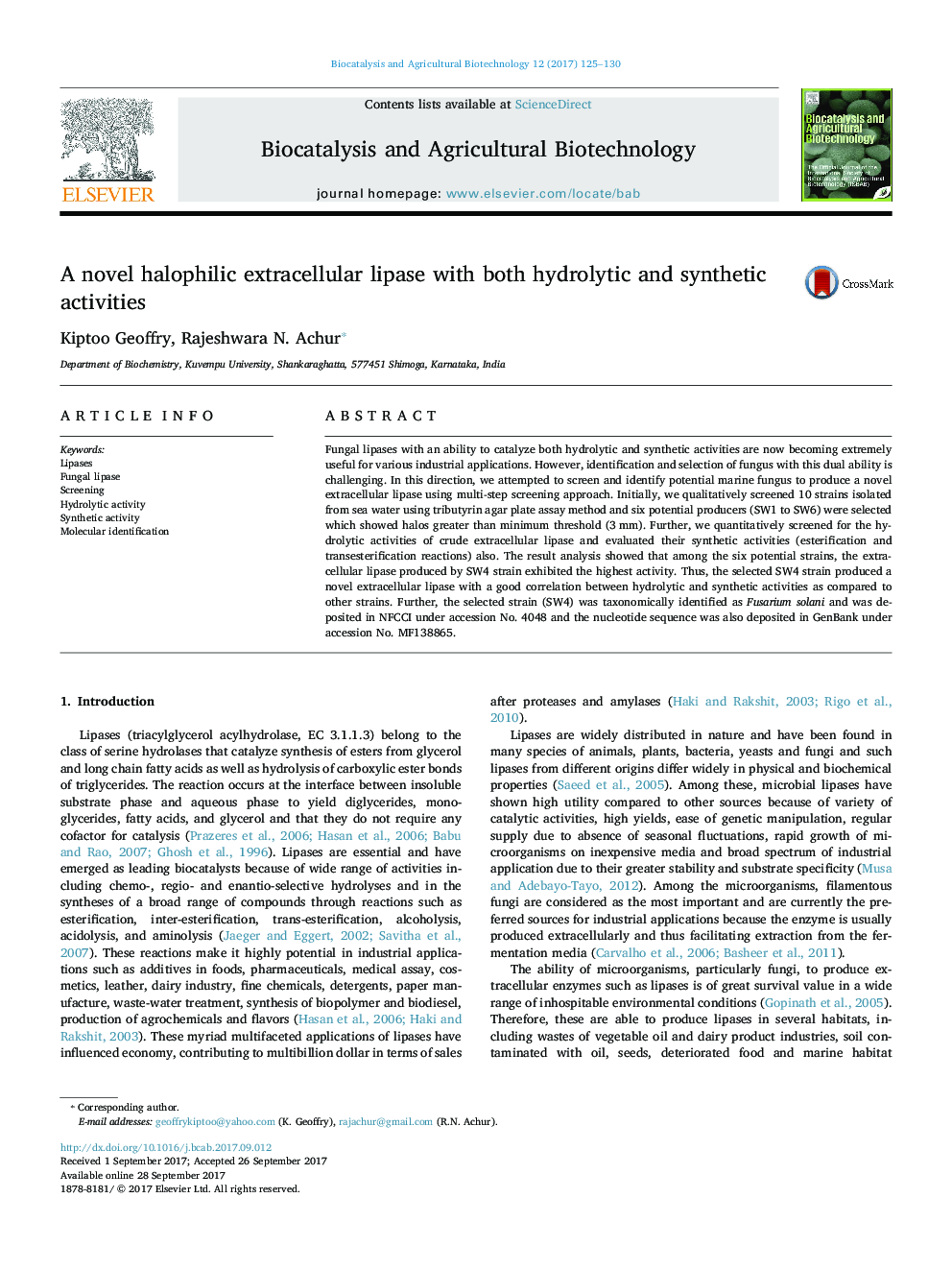| Article ID | Journal | Published Year | Pages | File Type |
|---|---|---|---|---|
| 5520435 | Biocatalysis and Agricultural Biotechnology | 2017 | 6 Pages |
â¢A multi-step screening approach was employed for screening marine fungal lipase.â¢Selected strain was taxonomically identified as Fusarium solani.â¢The lipase produced by the fungi has the ability to catalyze both hydrolytic as well as synthetic reactions.â¢The novel halophilic lipase produced by Fusarium solani suits numerous industrial applications of enzymes.
Fungal lipases with an ability to catalyze both hydrolytic and synthetic activities are now becoming extremely useful for various industrial applications. However, identification and selection of fungus with this dual ability is challenging. In this direction, we attempted to screen and identify potential marine fungus to produce a novel extracellular lipase using multi-step screening approach. Initially, we qualitatively screened 10 strains isolated from sea water using tributyrin agar plate assay method and six potential producers (SW1 to SW6) were selected which showed halos greater than minimum threshold (3Â mm). Further, we quantitatively screened for the hydrolytic activities of crude extracellular lipase and evaluated their synthetic activities (esterification and transesterification reactions) also. The result analysis showed that among the six potential strains, the extracellular lipase produced by SW4 strain exhibited the highest activity. Thus, the selected SW4 strain produced a novel extracellular lipase with a good correlation between hydrolytic and synthetic activities as compared to other strains. Further, the selected strain (SW4) was taxonomically identified as Fusarium solani and was deposited in NFCCI under accession No. 4048 and the nucleotide sequence was also deposited in GenBank under accession No. MF138865.
